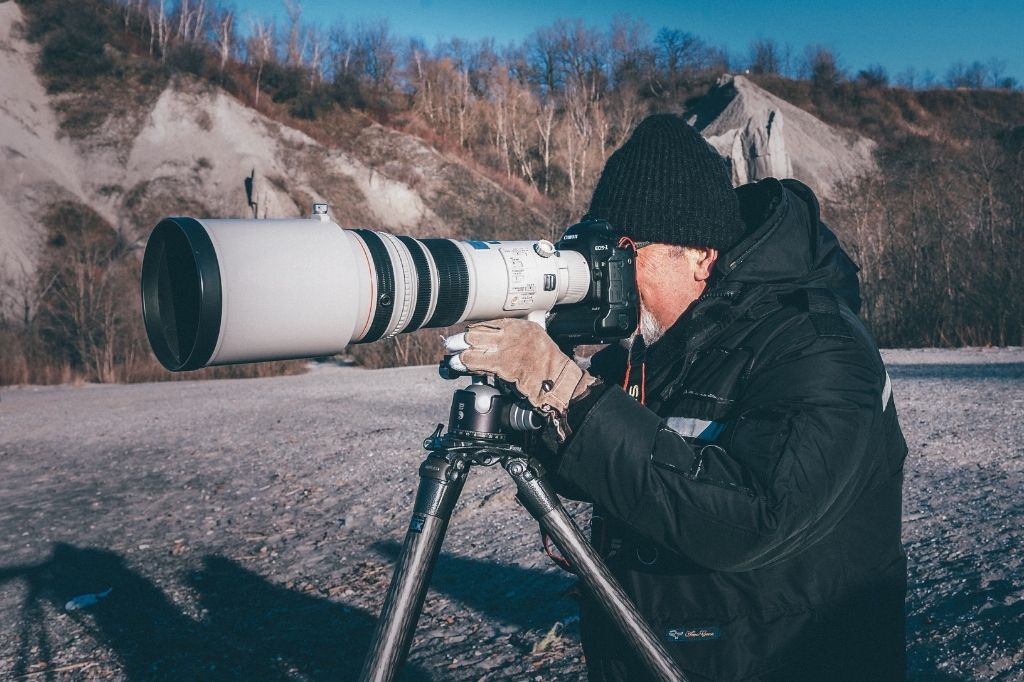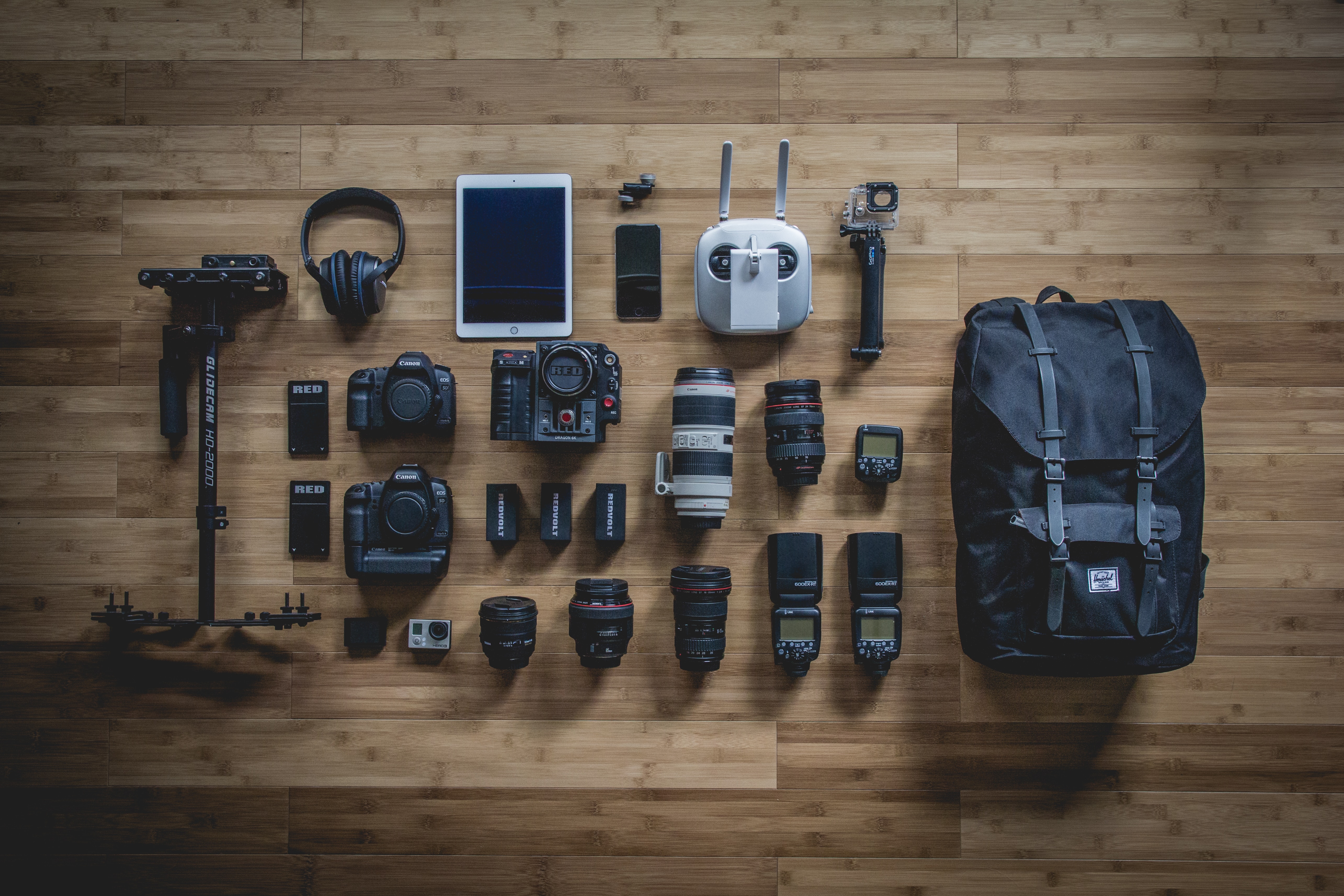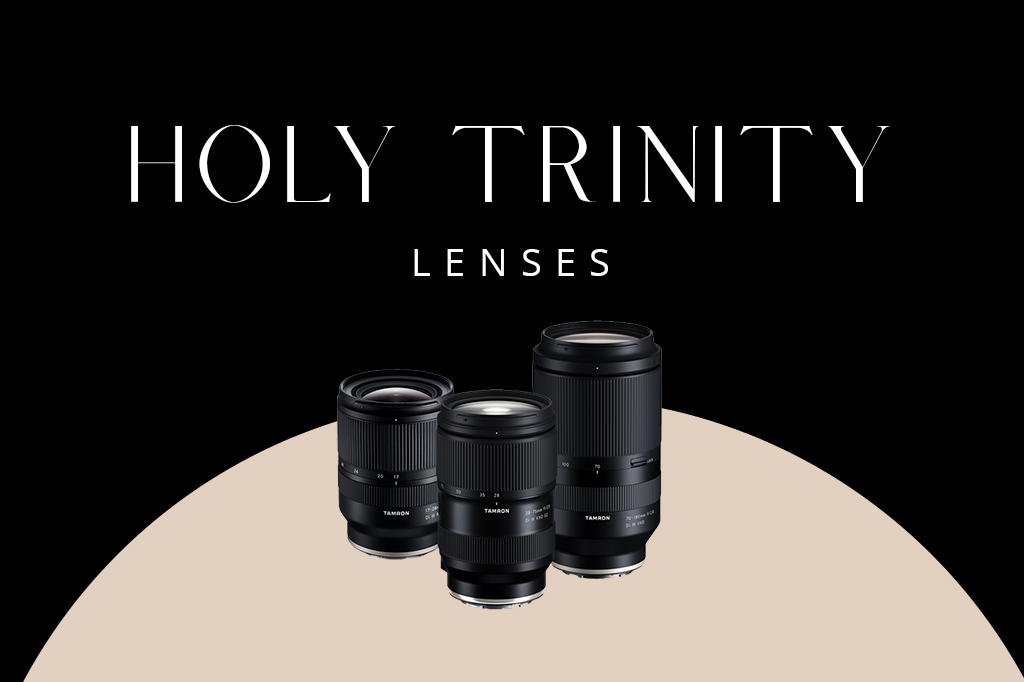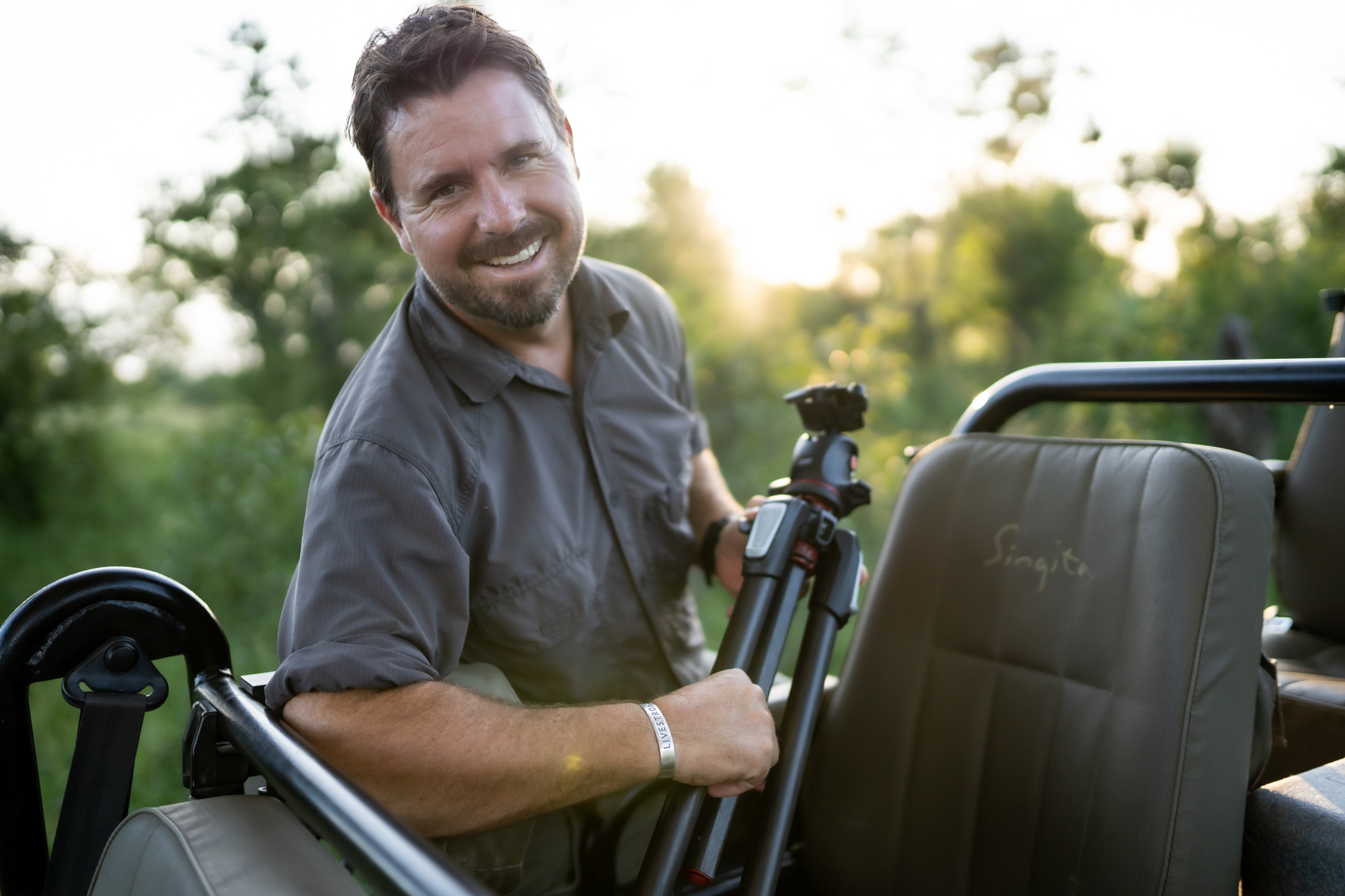Super-telephoto lenses: you can always find one attached to the hefty camera body slung over the shoulder of every photographer posed on the sidelines of major sporting events, and you can bet that every wildlife photography enthusiast venturing into the wilderness for a day of bushveld adventuring has at least one resting beside them on the seat of their 4×4. These high-end, elite lenses are renowned for enabling photographers to get up close and personal with their subjects.
Generally being the top of the range among the glass offerings of most camera manufacturers, super-telephotos deliver unparalleled performance, whether it be exceptional clarity and sharpness, or unmatched speed. Their robust build quality is unrivalled, and the latest generation iterations are bristling with the latest technological advancements in terms of lens coatings, optical construction, stabilisation, autofocus and external buttons and switches. All these advantages come together to provide a top-of-the-line shooting experience, now available to both established DSLR shooters and mirrorless photographers alike thanks to newer releases from industry-leading camera brands.
Let’s dig into everything that modern super-telephoto lenses have to offer and discover exactly what makes these lenses worth their premium pricetag.
Want to learn more about essential lenses every photographer should have in their kit bag? We did a deep dive into the legendary “Holy Trinity”, the collection of three lenses that are said to allow any image-maker to tackle any shoot with accuracy and competency. Dig into the full blog post here.
TELEPHOTO LENSES VS. SUPER-TELEPHOTO LENSES
Firstly, what counts as a super-telephoto lens? Generally, lenses of 200mm and below in focal length (think 70-200mm, 100mm and 135mm) are regarded as simply “telephoto”, while anything above 300mm is considered a “super-telephoto”. This includes primes of 300mm to 1200mm, as well as common variable focal length options like 200-400mm and 100-500mm lenses. While you’ll more often find telephoto lenses in the kit bags of most generalist photographers, super-telephotos have more specific applications due to their specialised features.
FOCAL LENGTH
This is the most obvious and significant advantage of super-telephoto glass. Lenses of more than 300mm in focal length allow photographers to capture their subjects from an extremely long distance. This is an absolute necessity for sports photographers who are limited in terms of how close to their subjects they can be. It is equally crucial for wildlife photographers whose subjects are often hidden away or easily scared off by people trying to get too close to them. When these super-telephoto lenses also happen to be primes (fixed focal length, with no ability to zoom in or out) the crispness and clearness of their images are unparalleled. Of course, you will be sacrificing the versatility and flexibility offered by variable focal length class, but the image quality certainly makes it worth it.
It is also worth noting that super-telephotos offer an even greater advantage for those shooting on APS-C, Micro Four Thirds and other cropped sensor cameras. The inherent crop factor — which might be considered detrimental in other shooting scenarios — actually magnifies the super-telephoto effect, allowing photographers to enjoy even more reach and get even closer to their subjects.
APERTURE
This is universally considered to be the second most crucial feature on any lens, as your maximum aperture will determine how “fast” the lens is (i.e. how much light it allows into the camera in low-lit conditions) and how shallow your depth of field can be.
With super-telephoto lenses, you will typically find that fixed maximum apertures of f/2.8 or more are relatively uncommon and that these wider varieties are far more pricey than their f/4 or variable maximum aperture counterparts. Wider fixed aperture lenses like f/2.8’s are also usually heavier and larger than those of smaller apertures. They’re also more commonly seen in prime super-telephotos. The variable maximum apertures that usually accompany zoom super-telephotos keep this variety of lens smaller and lighter, but they’re normally “slower” than the premium primes that are touted as being top of the line among super-telephoto offerings.
When focal lengths go up, the maximum aperture tends to do so as well. This is largely due to the fact that very long lenses with very wide maximum apertures would be highly impractical as they would need to be extremely large and very heavy. This explains why something like the Canon RF 1200mm f/8 L IS USM Lens only has a maximum aperture of f/8.
At the end of the day, you should think about what you would like to prioritise based on your subject matter, shooting conditions and the type of images you like to create. Do you often shoot in low-light environments? Is a very shallow depth of field very important to you? You’re likely better off with a prime with a wide maximum aperture. If you need to prioritise versatility and rapid focal length adjustments, a variable focal length super-telephoto lens with a slower and varying maximum aperture will likely suit you better. Consider your needs very thoroughly before investing in a super-telephoto of your own.
IMAGE STABILISATION
Colloquially referred to as IS, image stabilisation is absolutely essential in super-telephoto lenses, especially if you are planning on shooting handheld at any point. Longer focal lengths make camera shake far more apparent than wider lenses. Additionally, super-telephotos are much heavier and bigger than your standard zooms or even shorter telephotos, meaning photographers will get fatigued far quicker and thus amplify the likelihood of producing a blurry image. This is why so many sport and wildlife photographers shoot on monopods or tripods.
Modern super-telephoto lenses come equipped with multiple stops of optical image stabilisation to help combat this issue. They also have the added benefit of usually featuring several IS modes to accommodate for different camera movements. Typically this includes modes for panning movements and more general handheld shooting. In addition to stabilising your final shot, IS will normally stabilise your viewfinder while you are shooting too, making the process of composing an image way easier.
It is also worth mentioning that many of the newer super-telephoto lenses feature optical IS that is compatible with the in-body image stabilisation found in the latest generation of mirrorless camera bodies. This provides even greater stabilisation.
AUTOFOCUS
Lens manufacturers are aware of the most common uses of super-telephoto lenses, and thus their autofocus performance is heavily prioritised in their design. Snappy autofocus is a must for sports photographers whose subjects move quickly and for wildlife photographers whose subjects move unpredictably.
It is true that autofocus performance is largely determined by the camera body itself with the newest mirrorless models from Canon and Sony certainly leading the way in this regard. Nonetheless, the supersonic and ultrasonic motors typically found in super-telephoto lenses contribute greatly in terms of how quick and quiet the autofocus is.
Super-telephoto lenses also have the added benefit of usually featuring helpful focus controls on the lens bodies themselves. This could include features such as focus limiters that will allow photographers to easily focus on subjects within a specific range or from a certain distance. A feature like this prevents the camera from uselessly hunting through the lens’ long focal range trying to lock onto a subject in a very specific focal plane.
Another feature often found on super-telephoto lenses is an autofocus lock button. This halts all focusing processes to allow the photographer to get ready for a particular shot or position. Some of the newer super-telephotos even include focus preset buttons that can be programmed to jump to a particular focus distance set by the photographer. All of these come together to offer a highly customised and extremely efficient shooting experience that is a real advantage to those photographing sports and wildlife.
OPTICAL TECHNOLOGIES
If you can think of a lens coating, it’s likely it can be found in a super-telephoto lens. Most include nano coatings to prevent flaring, as well as fluorite elements that control aberrations. Extra-low dispersion elements are also very common. This type of optical technology works in conjunction with other elements such as fluorite and aspherical elements to reduce aberrations and correct distortion, producing extremely sharp and detailed images. Depending on the lens manufacturer, certain super-telephoto lenses even feature Diffractive Optics or be Phase Fresnal in nature, meaning they will be smaller, lighter and also benefit from the reduction of various kinds of aberrations.
As is the standard these days, super-telephoto lenses also feature the anti-reflective coatings found on most glass. Anti-reflective coatings aid in the elimination of flaring and ghosting by minimising internal reflections. A lot of the most robust super-telephotos will also include fluorine and/or water- and dust-repellent coatings on their front and rear elements. These coatings allow photographers who frequently shoot in harsher environments to easily clean their lenses.
It is worth noting that adding filters to super-telephoto lenses can be a bit of a challenge. Most of them have extraordinarily large front elements that are far larger than the standard diameters of the standard screw-on UV, ND, polarising filters available for other lenses. If you want to use a filter with a super-telephoto lens, this usually has to be done by placing a drop-in filter that slides in a dedicated holder located towards the rear of the lens. This keeps the filter sizes much smaller than they would need to be if they were meant to be mounted to the front of the lens.
BUILD QUALITY
Since they sit at the top of most manufacturers’ lens lineups, super-telephoto lenses are constructed according to the highest possible standards. Most are made of materials such as magnesium alloy, allowing them to be both strong and relatively lightweight. They are weather-sealed to keep them functional in rainy or moist shooting conditions, an essential for both sport and wildlife photographers.
Some might wonder why so many super-telephoto lenses are white, especially those produced by Canon and Sony. Super-telephoto lenses have a large surface area and are typically used outside. The white finish on the barrel of the lens reflects some of the sunlight to which it is exposed, reducing the chance that any critical elements or parts within the lens will expand because of the heat and cause misalignments when shooting.
However, if you have a black super-telephoto lens, don’t allow this fact to make you anxious. The actual amount of heat gain due to long-term sunlight exposure is most likely negligible. Considering the durable construction of super-telephoto lenses, it is unlikely that those with darker glass have anything to worry about.
TELECONVERTERS
Finally, most super-telephoto lenses are compatible with teleconverters that enable them to further extend their reach. Teleconverters usually magnify the focal length by 1.4x, 1.7x or 2x, and they do so without the photographer losing access to essential features like autofocus or image stabilisation. Typically, you will lose one or two stops of light, but this is dependent on the teleconverter’s magnification. Sometimes teleconverters will not be compatible with certain lenses or cameras. This is because they have a glass element at their rear that makes contact with the rear element of some lenses. The other possible downside is that some cameras’ AF systems will not function due to the potential loss of light.
Are you sold on super-telephoto lenses? You can shop our full range of long lenses from Canon, Nikon, Sony and other manufacturers on Orms Direct.








